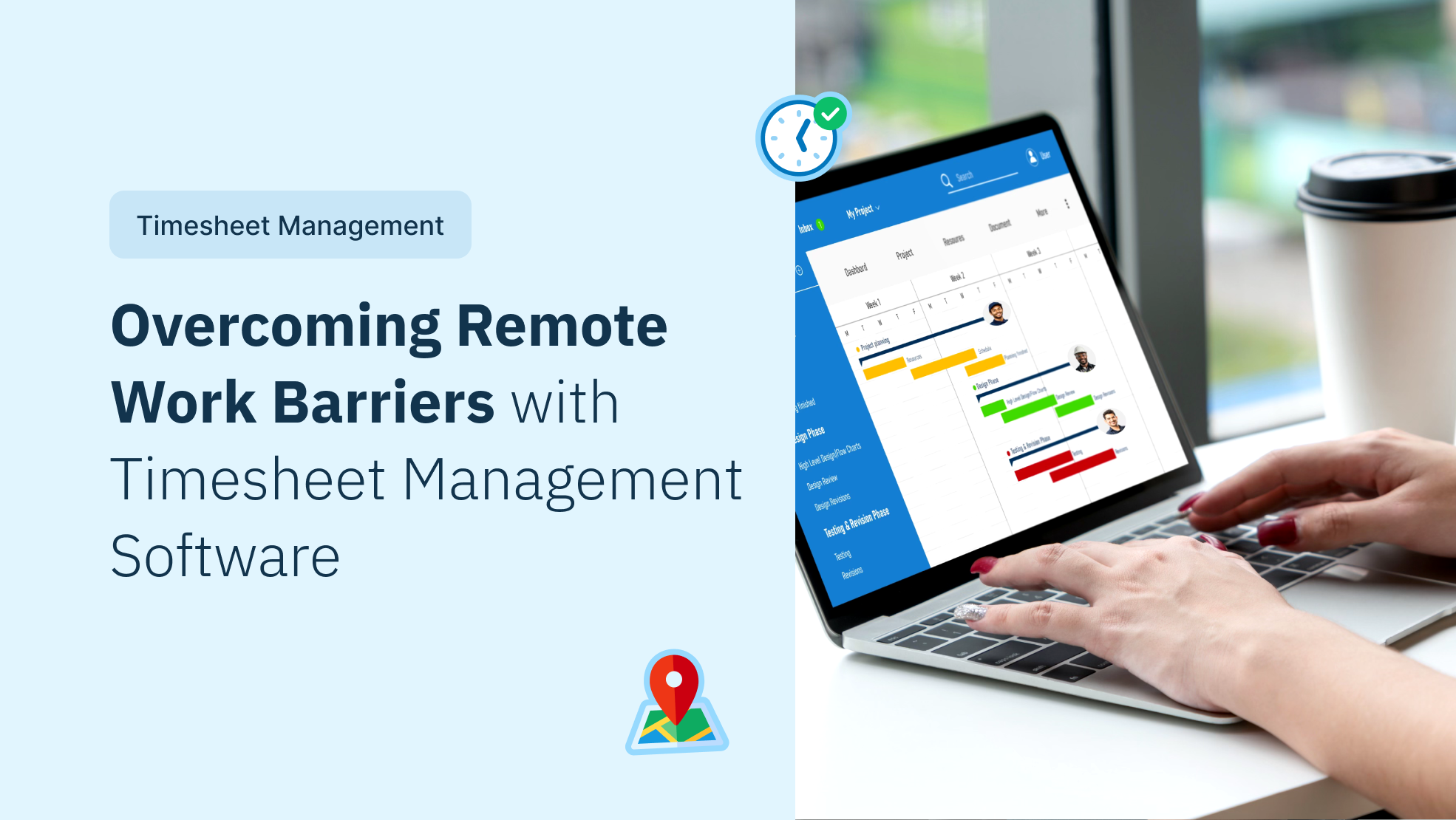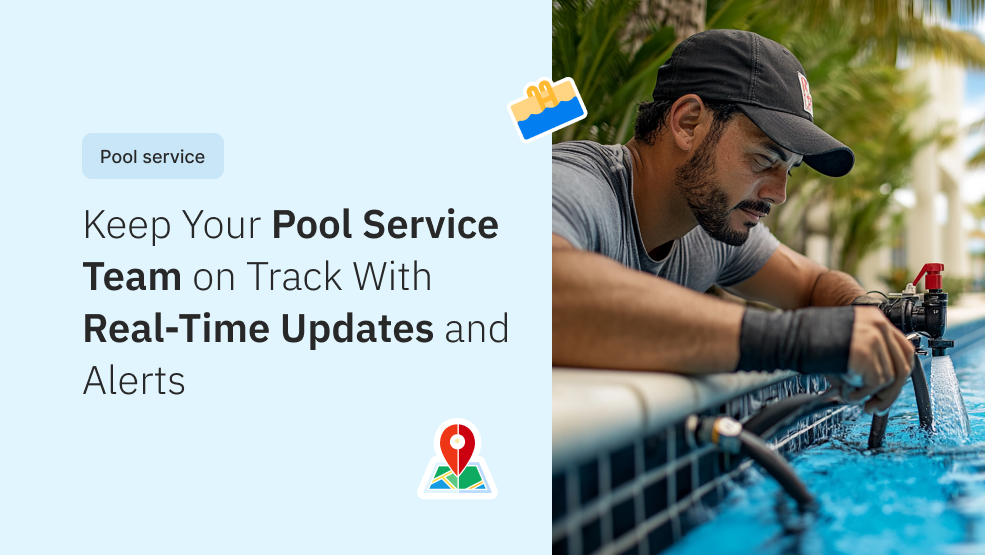When managing your remote field service team, it’s crucial to understand the importance of timesheet management beyond just tracking hours. It’s not about micromanaging or ensuring they work enough hours; it’s about accountability and making strategic decisions. First and foremost, it’s essential to clarify that timesheet management is not about monitoring every minute of your team’s work. Instead, it’s about ensuring that they work the appropriate amount of time and allowing you to make informed decisions about your team’s workload and productivity.
Time plays a crucial role in forecasting how much work your team can accomplish. The amount of revenue that you generate will be tied not only to your team’s capacity but also to the amount of time they have available to complete assigned work. Understanding your project pipeline and how this aligns with available resources—such as personnel and time—is critical to properly tracking your employees and estimating how much they can reasonably accomplish. Moreover, timesheet management can contribute to happier employees. When employees feel that their time is respected and that their workload is manageable, they are more likely to be productive. This productivity, in turn, is a boon for the growth of your business.
Having said that, properly managing timesheets can quickly become difficult for back-office staff and field techs alike when dealing with a remote workforce. Working at a variety of job sites complicates time tracking in a way that 9 to 5 office workers don’t have to worry about. Productivity and how to measure it has its own set of challenges when dealing with a remote workforce. This article will discuss some of those challenges and how to overcome them.
Challenges in remote workforce management
When working in remote areas, timesheet management becomes increasingly difficult for back-office teams. While there is always an option to employ manual methods of time-tracking, we all know that choosing an automated solution is the better choice for businesses. Even though most would agree, that choosing an automated method would be the better choice, some businesses will still choose a manual solution. This isn’t out of laziness. It’s because of the real-world conditions that businesses must co-exist with. Chief among these is poor network connectivity. Zuper has solved this problem for many business owners. But there are other challenges that exist. Let’s take a closer look at what some of these challenges are and what solutions exist to address them.
For your back office team
Limited communication
Slow and unreliable communication is not limited to teams working remotely in the field. But it is a bigger problem. Depending on the location of the job, there can be a significant time zone difference between the back-office team and people working in the field. Communication between different time-zones can be particularly challenging. Getting timely feedback on timesheet entries is a struggle—and this a problem. Time sheet entries are the basis for pay and the starting point for questions about overtime compensation. Unclear descriptions? These too must be addressed and communication between time zones makes it that much more challenging.
Missing or inaccurate data
Remote field work raises the question if manual time entries should be brought back? Without a stable internet connection, field technicians might be unable to submit timesheets electronically. Though switching to digital timesheets may sound like the best option here, they are more prone to errors. We cannot ignore the fact the there will a delay in it reaching the back office team which is something you cannot afford in your busy workload.
Data verification challenges
Since the crew won’t be on-site, verifying the accuracy of timesheets, especially travel times or overtime hours, could be difficult for the back-office personnel. They would have to rely on the field technicians’ judgment and any additional information they provide. So, there is a little too high a chance the data is inaccurate.
Payroll delays
Continuing, any issues with timesheets, like missing data, or needing clarifications, could lead to delays in processing payroll for the field team. This causes frustration for the back office team and may severely affect the morale of the crew.
For field technicians
Meal breaks
Depending on the remoteness of your technician’s location, there might not be easily accessible places to take breaks. This can make it difficult for your technician to take breaks at scheduled times, leading to inaccuracies in timesheet reporting. Your technician might find themselves eating on the go or skipping breaks altogether to stay on schedule, which isn’t just a timesheet issue but a potential health concern. This can disrupt their workflow and cause discrepancies in their recorded break times, affecting their overall work balance and well-being.
Inaccurate time tracking
Without the usual infrastructure and connectivity that comes with a populated area, clocking in and out at the beginning and end of your technician’s shift can be cumbersome. Your technician might not have cell service to use a timekeeping app, and physically getting to a central time clock could be time-consuming itself, especially if the worksite is spread out over a large area. Imagine your technician having to traverse several miles just to punch in, losing precious work time in the process. This can lead to inaccuracies in your technician’s recorded hours, impacting their pay and work records.
Estimating travel time
Travelling to and from a remote worksite can take significantly longer than in an urban area. Conditions can be unpredictable, with weather changes or unexpected detours causing delays. Estimating travel time accurately for timesheet purposes can be difficult, as your technician might face challenges that urban workers rarely encounter. They could spend hours navigating rough terrain or dealing with roadblocks, which complicates their ability to log precise travel times, potentially affecting their compensation.
Documentation challenges
In remote locations, internet access might be unreliable. This can make it difficult for your technician to submit timesheets electronically or to upload any necessary supporting documentation, such as photos and completion reports, along with them. Your technician might have to wait until they return to an area with better connectivity, delaying the submission process and causing potential issues with project timelines and verification of their work hours.
Overtime verification
Without a supervisor physically present on-site, it can be challenging to verify the need for overtime hours. This could lead to disputes or delays in getting your technician’s overtime pay approved. They might have worked extra hours to meet a deadline or handle an unexpected issue, but without proper verification, their efforts could go unrecognized. This lack of immediate oversight can create friction between your technician and management, impacting their morale and willingness to work additional hours when needed.
Time tracking solutions for remote field team
Here is the solution you have been looking for to end your trouble with remote workforce management—get timesheet management software. That’s just our straight way of telling you, but let us explain in detail how timesheet management software proves to be a productivity tool for your business.
1. Timesheet management mobile app
Zuper’s mobile app offers a user-friendly platform for remote technicians to manage their work schedules. They can clock in and out of jobs, update work progress, and access important job information directly from their phones. This eliminates the need for them to constantly check in with dispatch or the office, giving them more autonomy and control over their workday. Furthermore, features like real-time location tracking (with consent) can improve technicians’ safety by allowing managers to locate them in case of emergencies.
How does it help remote teams? Zuper mobile app comes with an offline functionality feature. That means whatever the situation is your field crew has no need to use paper timesheets. They can capture data, update job progress, and clock in/out time entries offline which will get updated once they get a stable network.
2. Customize hierarchies
Let’s say you’re out fixing a wind turbine in the middle of nowhere. You just finished a long shift and headed to fill out your timesheet. But wait, who exactly do you send it to? Is it your direct supervisor back at the office, or is there someone on-site you need approval from first?
Things can get confusing with remote teams, especially when there are different roles and reporting structures. Maybe you work with a senior technician on some tasks, but report to a different project manager for others. Without a clear system, you might end up sending your timesheet to the wrong person, causing delays or confusion.
Timesheet management systems allow you to establish customized approval hierarchies. Technicians can submit timesheets to their designated supervisors for review and approval electronically, even when working remotely. This streamlines the process and ensures accountability within the remote workforce.
3. Make payroll adjustments
Alright, let’s say you just finished a monster week fixing up some solar panels at a remote location. You clocked some serious hours, including late-night pushing to get everything finished on time. Now, you’re looking forward to that pay check reflecting all your hard work. But hold on, processing payroll for remote workers can get tricky.
Here’s why: First, there’s the whole overtime situation. Back in the office, it might be easy for your manager to see you putting in the extra hours. But out on a remote job, it’s all on your timesheet. If you forget to mark down that extra shift you pulled, or there’s no clear system for tracking it, that overtime pay could vanish.
Then there’s travel time. Let’s face it, getting to those remote locations can take a chunk out of your day. Factoring in that travel time to your payroll can be a hassle, especially if the distance varies depending on the job. You might end up having to argue your case or fill out mountains of paperwork to get compensated for that long drive.
And don’t forget about those special allowances that come with certain jobs. Maybe working in a remote area means you get a per diem for meals, or perhaps there’s a bonus for harsh weather conditions. Keeping track of all these extras and making sure they get factored into your pay check can be a nightmare without a proper system.
The worst is having to calculate all this overtime, travel, and allowances manually yourself and then chase down whoever needs to approve it. This results in errors and delays. You could end up waiting weeks to get paid what you’re owed, which is no fun after putting in a long week at a remote location.
Timesheet management systems allow you to define custom rules and automate payroll adjustments. For example, the system can automatically calculate overtime pay based on predefined thresholds or add travel time allowances based on location data. This reduces manual calculations and the risk of errors in remote payroll processing.
4. Keep track of all multiple jobs and technicians
You’re juggling multiple remote jobs – fixing solar panels in one state, turbines in another. Your technicians are scattered across the country. Keeping track of who’s working on what project, where they are, and if they’re on schedule is a nightmare. You end up buried in emails and calls just trying to track everyone down. A critical issue pops up at a remote site. Who’s available to fix it? Wasting time searching slows everything down. Timesheet management systems can be your lifesaver. They act as a central hub for all your timesheet data. You can see everything in one place – who’s working on what, their location, and progress. Suddenly, managing your remote workforce becomes a breeze. You can quickly identify the closest qualified technician for urgent tasks and ensure all your remote jobs run smoothly.
5. Export employee timesheets in the desired format
Remote technicians might use different devices or prefer various formats for submitting timesheets. Modern timesheet systems like Zuper offer flexible export options. Technicians can submit timesheets electronically through a mobile app or web interface, regardless of their location or device. The back-office team can then export these timesheets in various formats (e.g., CSV, PDF) for integration with payroll or accounting software.
Must-have tool for solar and wind service operations
While Zuper timesheet management software is beneficial for many service businesses, solar and wind service companies can gain even more advantages. Here’s why:
- Spread out teams
- Project-based work
- Non-standard work schedules
- Compliance and recordkeeping
- Improved communication
Spread out teams: Solar and wind farms are often in remote locations, making it hard to track employee hours manually. Timesheet software allows technicians to submit their hours electronically, no matter where they are. This removes the need for paper timesheets or unreliable cell service to send data.
Non-standard work schedules: Solar and wind technicians often work irregular hours due to weather conditions or project deadlines. Timesheet software can handle these flexible schedules and ensure employees are properly compensated for overtime or weekend work.
Compliance and recordkeeping: In remote areas, internet access can be spotty. Timesheet software with offline capabilities allows technicians to log their hours even without a constant internet connection. The data syncs automatically when they’re back online, ensuring accurate records for payroll and compliance.
Communication and transparency: Timesheet software provides real-time data on project progress and labor costs, even in remote locations. This enables managers to make informed decisions about resource allocation and project timelines, even if they’re not on-site.
Key to team performance
Investing in timesheet software is essential for service businesses with remote field teams. With accurate data on work hours, you can optimize team productivity and workload. Best of all, it eliminates headaches for your back-office team and field technicians. Choose Zuper timesheet management to make informed decisions about your team’s workload and productivity. Book your slot for a free demo now.








